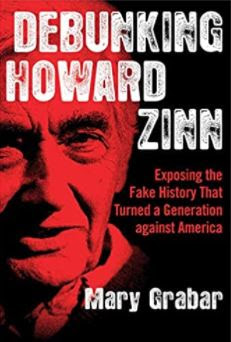In 2019, when a newly elected Oklahoma City council member, JoBeth Hamon, was sworn into office, she placed her hand not upon a Bible, but upon Howard Zinn’s book, A People’s History of the United States.
Hamon's action illustrates the continuing prevalent influence that Zinn’s book has upon the thinking of many Americans—and the loss of the Bible’s place of honor.
A People’s
History of the United States first appeared in 1980. Even in its 32nd year, it was identified as the bestselling American history survey book, both
as a trade book and a textbook.
Stanford University
education professor Sam Wineburg referred to the book as having a “preternatural
shelf life.” To say Zinn’s book is “trendy” is an understatement. Few history books can touch its record.
Yet, A People’s History of the United States has been perhaps the
single most influential text in shaping negative views of the United States. It
epitomizes Critical Theory applied to history.
From Christopher
Columbus, to the treatment of Native Americans, to the practice of slavery and
the motivation for the Civil War, to World War II and the Cold War that
followed, Zinn’s book is one relentless criticism after another. It is nearly
impossible to read Zinn’s book without concluding the United States is an evil
empire, and has been evil from the start. A nation worthy to be brought down.
But is
Zinn’s criticism historically sound? Is it accurate?
That question
has been answered with a resounding “No!” by Mary Grabar, in her long overdue 2019
book, Debunking Howard Zinn: Exposing the Fake History That
Turned a Generation against America.
Garbar goes into meticulous detail, with extensive documentation,
pointing out multiple specifics of Zinn’s “fundamentally and grossly dishonest”
work.
It is the specificity of Grabar’s book that is so impressive. She doesn’t just make general observations about Zinn’s dishonesty, but takes a thorough look at Zinn’s specific claims throughout his book. Time after time, Grabar proves Zinn to be anything but an authentic historian.
Zinn was a shrewd storyteller,
with a nefarious agenda.
Rather than
buying a copy of Zinn’s book, get a copy of Garbar’s book, which contains so
many quotes from Zinn’s book, you will in essence have read both books at once.
To understand
why so many people today are anti-Western, anti-capitalist, anti-Columbus, and
anti-statues, Debunking Howard Zinn is essential reading.

